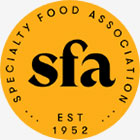

Launching a new CPG food brand? Naming takes work, but following a few principles, it can be successful.
Thousands of US brands are popping up daily, claiming a name from the USPTO. On top of that, it can be hard seeing the name from a consumer’s point of view. It’s instinctive to want to impart deep meaning.
Turns out, naming can be fun. It might be the most creative opportunity in the entire branding process. Why? Because it doesn’t need to have deep meaning; in fact, it doesn’t even need to be a real word.
However, there are certain things a name does need to be successful. And before you “google” (a perfect example), I’ll break them down here.
Engaging: Fun, irreverent, even depressing; a name can evoke any emotion, but it should be “sticky.” The more consumers talk about the name, the more they remember it.
Provocative or buzz-worthy: Only some brands are appropriate for a name that could incite critical thinking, spark conversations, or elicit a strong response. However, if your product or service can surpass the expected or tap into a disruptive platform, the name is a powerful place to start. “Liquid Death” is a pretty intense name, and look at all that buzz.
Appropriate name for the product: Speaking of, it can be jarring and desperate when a brand’s name is so disruptive it’s not category appropriate. Be wary of going so far that your name is alienating to your core consumer.
Flexible and enduring: Another risk of going too far with naming is overly depending on trends, especially linguistically. Some phrases or words stand the test of time, but if you aim for longevity, something like “Bussin'” might not feel relevant in a few years.
Culturally sensitive name: Today’s consumers put their money where their mouth is; if a brand or product name feels tone deaf or, worse, offensive, the business could suffer. All press is not good press: much better to be talked about positively.
Protectable: Even if you have the perfect name, and it’s free and clear from the USPTO, if it’s not unique enough or works just as well for another product with similar qualities, you could spend years and millions sending cease & desists or suing for naming rights. The more ownability you can impart to the name and the visual identity, the better. Avoid generic solutions, even if they are currently available.
Concise. Your CPG food brand has nominal space at-shelf, so a brief name is also valuable for branding and identity. If shorter or easier to spell, it’s easier to remember. It will “stick.”
Easy to say and spell. Like the above, a name that rolls off the tongue is always best. Bonus: if it is fun to say, with a unique mouthfeel, it’s extra memorable.
Natural sounding: When I say “fun to say,” I do not mean “hard to pronounce.”
Visually evocative: For trademarking and branding purposes, if you can find a name with interesting letterforms, you can leverage the name for so much ownability when it comes to the brand mark.
Universally, these tips all ladder up to the same thing: a good name is memorable. This can be from how it looks or sounds or because it is clever and a little unexpected (“Slack” for a workplace tool is just plain smart. It hits every point above). If you can find a name with meaning behind it for both you and the consumers, that is a significant bonus. But it’s optional and should not hinder the creative process.
Frankly, you might need three or four names to find one you can trademark, so push the boundaries and see what you conjure up.
If you have done the positioning or brand vision work to support it, you could even start with a scrappy language audit to help inspire your naming. This article explains how to go about it.
Image by Rohan Oraq









